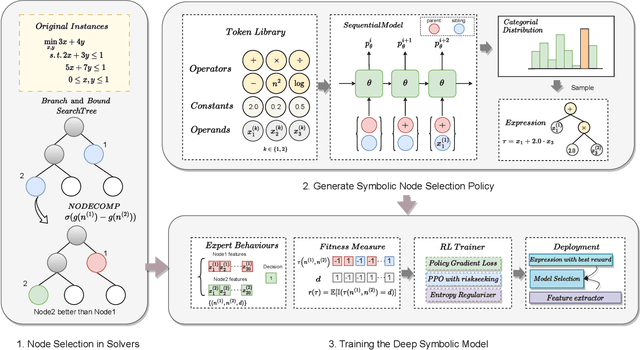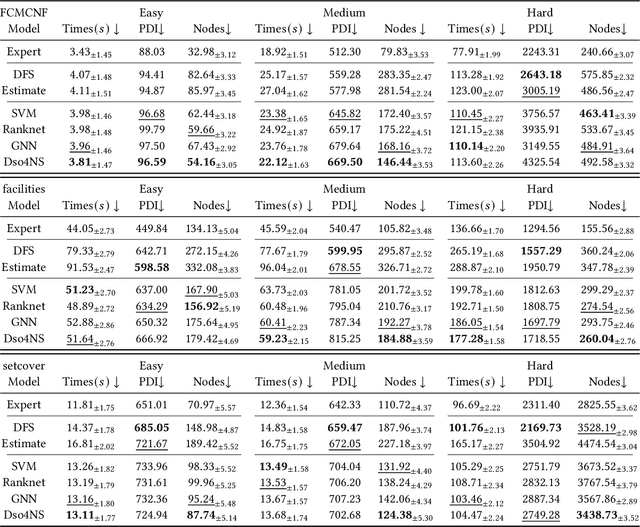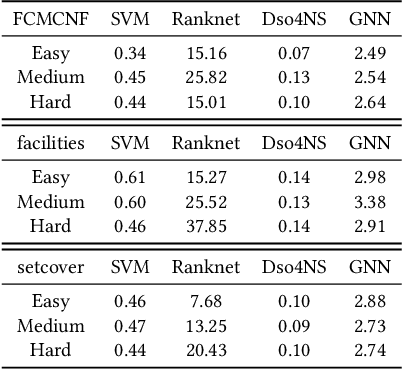Hongyu Liu
Follow-Your-Shape: Shape-Aware Image Editing via Trajectory-Guided Region Control
Aug 12, 2025



Abstract:While recent flow-based image editing models demonstrate general-purpose capabilities across diverse tasks, they often struggle to specialize in challenging scenarios -- particularly those involving large-scale shape transformations. When performing such structural edits, these methods either fail to achieve the intended shape change or inadvertently alter non-target regions, resulting in degraded background quality. We propose Follow-Your-Shape, a training-free and mask-free framework that supports precise and controllable editing of object shapes while strictly preserving non-target content. Motivated by the divergence between inversion and editing trajectories, we compute a Trajectory Divergence Map (TDM) by comparing token-wise velocity differences between the inversion and denoising paths. The TDM enables precise localization of editable regions and guides a Scheduled KV Injection mechanism that ensures stable and faithful editing. To facilitate a rigorous evaluation, we introduce ReShapeBench, a new benchmark comprising 120 new images and enriched prompt pairs specifically curated for shape-aware editing. Experiments demonstrate that our method achieves superior editability and visual fidelity, particularly in tasks requiring large-scale shape replacement.
Follow-Your-Instruction: A Comprehensive MLLM Agent for World Data Synthesis
Aug 07, 2025Abstract:With the growing demands of AI-generated content (AIGC), the need for high-quality, diverse, and scalable data has become increasingly crucial. However, collecting large-scale real-world data remains costly and time-consuming, hindering the development of downstream applications. While some works attempt to collect task-specific data via a rendering process, most approaches still rely on manual scene construction, limiting their scalability and accuracy. To address these challenges, we propose Follow-Your-Instruction, a Multimodal Large Language Model (MLLM)-driven framework for automatically synthesizing high-quality 2D, 3D, and 4D data. Our \textbf{Follow-Your-Instruction} first collects assets and their associated descriptions through multimodal inputs using the MLLM-Collector. Then it constructs 3D layouts, and leverages Vision-Language Models (VLMs) for semantic refinement through multi-view scenes with the MLLM-Generator and MLLM-Optimizer, respectively. Finally, it uses MLLM-Planner to generate temporally coherent future frames. We evaluate the quality of the generated data through comprehensive experiments on the 2D, 3D, and 4D generative tasks. The results show that our synthetic data significantly boosts the performance of existing baseline models, demonstrating Follow-Your-Instruction's potential as a scalable and effective data engine for generative intelligence.
Flexible Operator Fusion for Fast Sparse Transformer with Diverse Masking on GPU
Jun 06, 2025Abstract:Large language models are popular around the world due to their powerful understanding capabilities. As the core component of LLMs, accelerating Transformer through parallelization has gradually become a hot research topic. Mask layers introduce sparsity into Transformer to reduce calculations. However, previous works rarely focus on the performance optimization of sparse Transformer. Moreover, rule-based mechanisms ignore the fusion opportunities of mixed-type operators and fail to adapt to various sequence lengths. To address the above problems, we propose STOF, a framework that incorporates optimizations for Sparse Transformer via flexible masking and operator fusion on GPU. We firstly unify the storage format and kernel implementation for the multi-head attention. Then, we map fusion schemes to compilation templates and determine the optimal parameter setting through a two-stage search engine. The experimental results show that compared to the state-of-the-art work, STOF achieves maximum speedups of 1.7x in MHA computation and 1.5x in end-to-end inference.
Follow-Your-Creation: Empowering 4D Creation through Video Inpainting
Jun 05, 2025



Abstract:We introduce Follow-Your-Creation, a novel 4D video creation framework capable of both generating and editing 4D content from a single monocular video input. By leveraging a powerful video inpainting foundation model as a generative prior, we reformulate 4D video creation as a video inpainting task, enabling the model to fill in missing content caused by camera trajectory changes or user edits. To facilitate this, we generate composite masked inpainting video data to effectively fine-tune the model for 4D video generation. Given an input video and its associated camera trajectory, we first perform depth-based point cloud rendering to obtain invisibility masks that indicate the regions that should be completed. Simultaneously, editing masks are introduced to specify user-defined modifications, and these are combined with the invisibility masks to create a composite masks dataset. During training, we randomly sample different types of masks to construct diverse and challenging inpainting scenarios, enhancing the model's generalization and robustness in various 4D editing and generation tasks. To handle temporal consistency under large camera motion, we design a self-iterative tuning strategy that gradually increases the viewing angles during training, where the model is used to generate the next-stage training data after each fine-tuning iteration. Moreover, we introduce a temporal packaging module during inference to enhance generation quality. Our method effectively leverages the prior knowledge of the base model without degrading its original performance, enabling the generation of 4D videos with consistent multi-view coherence. In addition, our approach supports prompt-based content editing, demonstrating strong flexibility and significantly outperforming state-of-the-art methods in both quality and versatility.
AvatarArtist: Open-Domain 4D Avatarization
Mar 26, 2025Abstract:This work focuses on open-domain 4D avatarization, with the purpose of creating a 4D avatar from a portrait image in an arbitrary style. We select parametric triplanes as the intermediate 4D representation and propose a practical training paradigm that takes advantage of both generative adversarial networks (GANs) and diffusion models. Our design stems from the observation that 4D GANs excel at bridging images and triplanes without supervision yet usually face challenges in handling diverse data distributions. A robust 2D diffusion prior emerges as the solution, assisting the GAN in transferring its expertise across various domains. The synergy between these experts permits the construction of a multi-domain image-triplane dataset, which drives the development of a general 4D avatar creator. Extensive experiments suggest that our model, AvatarArtist, is capable of producing high-quality 4D avatars with strong robustness to various source image domains. The code, the data, and the models will be made publicly available to facilitate future studies.
An Appearance Defect Detection Method for Cigarettes Based on C-CenterNet
Feb 10, 2025Abstract:Due to the poor adaptability of traditional methods in the cigarette detection task on the automatic cigarette production line, it is difficult to accurately identify whether a cigarette has defects and the types of defects; thus, a cigarette appearance defect detection method based on C-CenterNet is proposed. This detector uses keypoint estimation to locate center points and regresses all other defect properties. Firstly, Resnet50 is used as the backbone feature extraction network, and the convolutional block attention mechanism (CBAM) is introduced to enhance the network's ability to extract effective features and reduce the interference of non-target information. At the same time, the feature pyramid network is used to enhance the feature extraction of each layer. Then, deformable convolution is used to replace part of the common convolution to enhance the learning ability of different shape defects. Finally, the activation function ACON (ActivateOrNot) is used instead of the ReLU activation function, and the activation operation of some neurons is adaptively selected to improve the detection accuracy of the network. The experimental results are mainly acquired via the mean Average Precision (mAP). The experimental results show that the mAP of the C-CenterNet model applied in the cigarette appearance defect detection task is 95.01%. Compared with the original CenterNet model, the model's success rate is increased by 6.14%, so it can meet the requirements of precision and adaptability in cigarette detection tasks on the automatic cigarette production line.
Multiscale style transfer based on a Laplacian pyramid for traditional Chinese painting
Feb 07, 2025Abstract:Style transfer is adopted to synthesize appealing stylized images that preserve the structure of a content image but carry the pattern of a style image. Many recently proposed style transfer methods use only western oil paintings as style images to achieve image stylization. As a result, unnatural messy artistic effects are produced in stylized images when using these methods to directly transfer the patterns of traditional Chinese paintings, which are composed of plain colors and abstract objects. Moreover, most of them work only at the original image scale and thus ignore multiscale image information during training. In this paper, we present a novel effective multiscale style transfer method based on Laplacian pyramid decomposition and reconstruction, which can transfer unique patterns of Chinese paintings by learning different image features at different scales. In the first stage, the holistic patterns are transferred at low resolution by adopting a Style Transfer Base Network. Then, the details of the content and style are gradually enhanced at higher resolutions by a Detail Enhancement Network with an edge information selection (EIS) module in the second stage. The effectiveness of our method is demonstrated through the generation of appealing high-quality stylization results and a comparison with some state-of-the-art style transfer methods. Datasets and codes are available at https://github.com/toby-katakuri/LP_StyleTransferNet.
RS-YOLOX: A High Precision Detector for Object Detection in Satellite Remote Sensing Images
Feb 05, 2025



Abstract:Automatic object detection by satellite remote sensing images is of great significance for resource exploration and natural disaster assessment. To solve existing problems in remote sensing image detection, this article proposes an improved YOLOX model for satellite remote sensing image automatic detection. This model is named RS-YOLOX. To strengthen the feature learning ability of the network, we used Efficient Channel Attention (ECA) in the backbone network of YOLOX and combined the Adaptively Spatial Feature Fusion (ASFF) with the neck network of YOLOX. To balance the numbers of positive and negative samples in training, we used the Varifocal Loss function. Finally, to obtain a high-performance remote sensing object detector, we combined the trained model with an open-source framework called Slicing Aided Hyper Inference (SAHI). This work evaluated models on three aerial remote sensing datasets (DOTA-v1.5, TGRS-HRRSD, and RSOD). Our comparative experiments demonstrate that our model has the highest accuracy in detecting objects in remote sensing image datasets.
Deep Symbolic Optimization for Combinatorial Optimization: Accelerating Node Selection by Discovering Potential Heuristics
Jun 14, 2024



Abstract:Combinatorial optimization (CO) is one of the most fundamental mathematical models in real-world applications. Traditional CO solvers, such as Branch-and-Bound (B&B) solvers, heavily rely on expert-designed heuristics, which are reliable but require substantial manual tuning. Recent studies have leveraged deep learning (DL) models as an alternative to capture rich feature patterns for improved performance on GPU machines. Nonetheless, the drawbacks of high training and inference costs, as well as limited interpretability, severely hinder the adoption of DL methods in real-world applications. To address these challenges, we propose a novel deep symbolic optimization learning framework that combines their advantages. Specifically, we focus on the node selection module within B&B solvers -- namely, deep symbolic optimization for node selection (Dso4NS). With data-driven approaches, Dso4NS guides the search for mathematical expressions within the high-dimensional discrete symbolic space and then incorporates the highest-performing mathematical expressions into a solver. The data-driven model captures the rich feature information in the input data and generates symbolic expressions, while the expressions deployed in solvers enable fast inference with high interpretability. Experiments demonstrate the effectiveness of Dso4NS in learning high-quality expressions, outperforming existing approaches on a CPU machine. Encouragingly, the learned CPU-based policies consistently achieve performance comparable to state-of-the-art GPU-based approaches.
Follow-Your-Emoji: Fine-Controllable and Expressive Freestyle Portrait Animation
Jun 04, 2024



Abstract:We present Follow-Your-Emoji, a diffusion-based framework for portrait animation, which animates a reference portrait with target landmark sequences. The main challenge of portrait animation is to preserve the identity of the reference portrait and transfer the target expression to this portrait while maintaining temporal consistency and fidelity. To address these challenges, Follow-Your-Emoji equipped the powerful Stable Diffusion model with two well-designed technologies. Specifically, we first adopt a new explicit motion signal, namely expression-aware landmark, to guide the animation process. We discover this landmark can not only ensure the accurate motion alignment between the reference portrait and target motion during inference but also increase the ability to portray exaggerated expressions (i.e., large pupil movements) and avoid identity leakage. Then, we propose a facial fine-grained loss to improve the model's ability of subtle expression perception and reference portrait appearance reconstruction by using both expression and facial masks. Accordingly, our method demonstrates significant performance in controlling the expression of freestyle portraits, including real humans, cartoons, sculptures, and even animals. By leveraging a simple and effective progressive generation strategy, we extend our model to stable long-term animation, thus increasing its potential application value. To address the lack of a benchmark for this field, we introduce EmojiBench, a comprehensive benchmark comprising diverse portrait images, driving videos, and landmarks. We show extensive evaluations on EmojiBench to verify the superiority of Follow-Your-Emoji.
 Add to Chrome
Add to Chrome Add to Firefox
Add to Firefox Add to Edge
Add to Edge